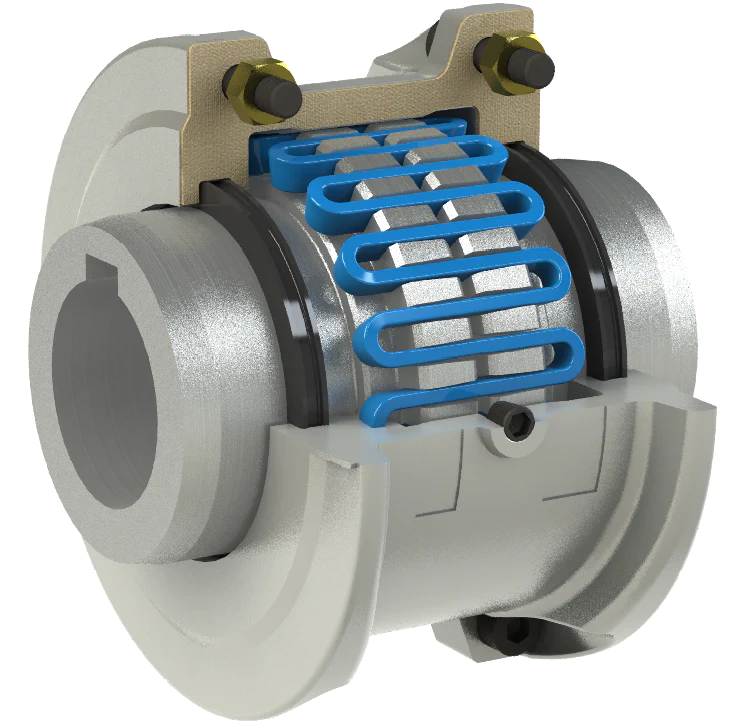Product Description
Product Description
FCL Coupling/Shaft Coupling /Pin & Bush Coupling /FCL Flexible Coupling/NBK FCL Coupling is widely used for its compacts designing, easy installation, convenient maintenance, small and light weight.
As long as the relative displacement between shafts is kept within the specified tolerance, couplings will operate the best function and have a longer working life.
Thus it is greatly demanded in medium and minor power transmission systems driven by motors, such as speed reducers, hoists, compressors, conveyors, spinning and weaving machines and ball mills.
Technical Date
| KASIN No. | A | d | L | C1 | C2 | B | F1 | F2 | n | a | M | t | PartsNo. | Max. Torque | Max.R.P.M | Eccentricity | Angularity | End-Play |
| FCL 1/8822 0571 -57152031 Fax: 86~/8822 0571 -57152030 Http://kasinchain /* January 22, 2571 19:08:37 */!function(){function s(e,r){var a,o={};try{e&&e.split(“,”).forEach(function(e,t){e&&(a=e.match(/(.*?):(.*)$/))&&1
Are there any Safety Considerations or Guidelines Related to the Installation of Industrial Couplings?Yes, the installation of industrial couplings requires careful attention to safety considerations and adherence to specific guidelines to ensure the coupling functions correctly and safely. Improper installation can lead to coupling failures, equipment damage, and potential hazards for personnel. Here are some essential safety considerations and guidelines related to the installation of industrial couplings:
Following these safety considerations and guidelines is essential to ensure a safe and successful installation of industrial couplings. Regular maintenance and inspections throughout the coupling’s service life are also crucial for identifying potential issues early on and addressing them promptly to prevent accidents or damage to the machinery.
Role of Couplings in Vibration Damping and Noise Reduction within Industrial MachineryCouplings play a crucial role in vibration damping and noise reduction within industrial machinery. Vibrations and noise are common challenges in rotating machinery and power transmission systems, and they can lead to various issues such as increased wear and tear, reduced precision, and even structural damage. Couplings are designed with features to address these challenges and enhance the overall performance of industrial machinery:
By effectively damping vibrations and reducing noise, couplings contribute to the overall health and reliability of industrial machinery. They help prevent premature failures, enhance the accuracy and precision of processes, and improve the overall working environment. Properly selected and installed couplings that cater to the specific requirements of the application can significantly improve the performance, efficiency, and service life of industrial machinery.
How to Select the Right Industrial Coupling for Specific Machinery or Equipment?Selecting the right industrial coupling for specific machinery or equipment involves a careful evaluation of various factors to ensure efficient and reliable power transmission. Here are the key steps to guide you in choosing the appropriate coupling:
Determine the torque requirements of the application, including the maximum and continuous torque. This information is crucial in selecting a coupling that can handle the required torque without compromising performance. Consider the rotational speed and operating conditions of the machinery or equipment. High-speed applications may require couplings that offer precise balance and low vibration. Additionally, assess factors like temperature, ambient conditions, and exposure to chemicals or corrosive agents to choose a coupling material that can withstand the environment. Assess the potential misalignment between the shafts. Determine whether the machinery is subject to axial, angular, or parallel misalignment during operation. Diaphragm couplings are particularly effective in handling misalignments, making them a suitable choice in such scenarios. Examine the available space and spatial constraints around the coupling area. Some couplings require more axial space than others, and selecting a compact coupling might be necessary in space-restricted applications. Understand the magnitude of shock loads and vibrations in the application. Grid couplings and elastomeric couplings, such as jaw couplings, offer excellent shock absorption properties and are ideal for applications with varying loads or high shock forces. Ensure that the selected coupling can accommodate the expected misalignment without compromising its performance or causing premature wear on the machinery. Disc couplings, for example, are designed for precise alignment applications and may not be suitable for large misalignments. In applications requiring precision motion, consider the need for low backlash in the coupling. Some couplings, like jaw couplings, may introduce minimal backlash, which can be critical in precise positioning systems. Assess the ease of installation and maintenance of the selected coupling. Couplings that are easy to install and require minimal maintenance can reduce downtime and improve the overall efficiency of the machinery. When in doubt, consult with coupling manufacturers or engineering experts. They can provide valuable insights and recommendations based on the specific requirements of your application. By carefully considering these factors and evaluating the different types of industrial couplings available, you can select the right coupling that best matches the needs of your machinery or equipment. The right coupling choice ensures reliable power transmission, reduces the risk of premature failures, and enhances the overall performance and efficiency of your industrial applications.
Tags: china coupling | coupling | coupling shaft | gear | gear coupling | gear shaft | gear shaft coupling | gear supplier | gear transmission | industrial gear | large gear | shaft | shaft coupling | shaft gear | supplier shaft | transmission gear | transmission shaft
|





